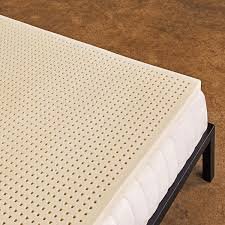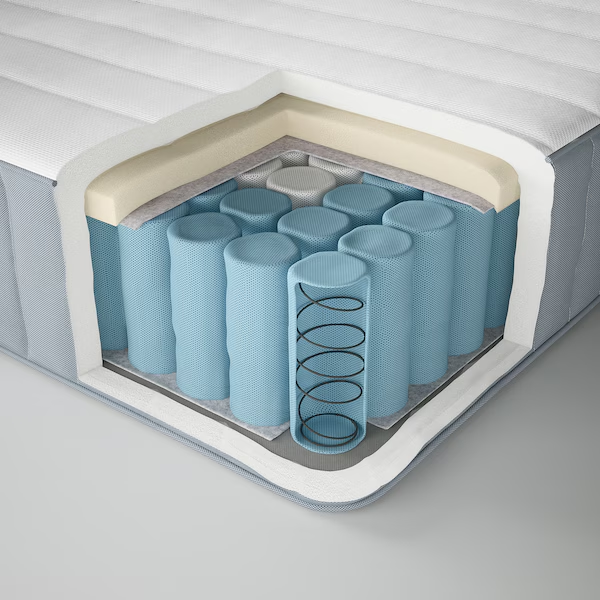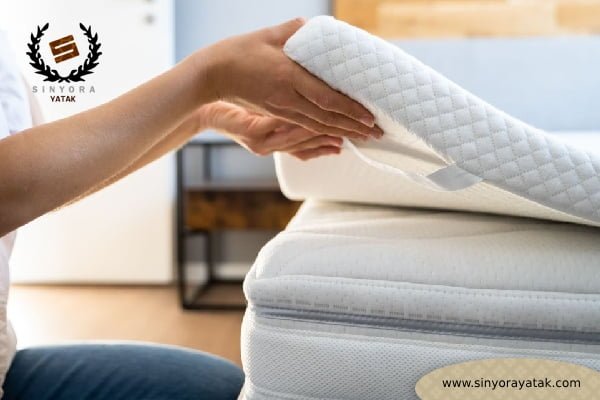Buying a mattress can be exciting and potentially daunting. With so many options, materials, and features on the market, it’s easy to feel overwhelmed.
However, high sleep quality affects your health, mood, and overall well-being.
In this guide, we’ll explore Mattress Shopping Mistakes to Avoid and offer practical tips to help you find a bed that offers lasting comfort and support.
Table of Contents
Ignoring Your Sleep Position and Body Type
Why It’s a Mistake
Different mattresses cater to different sleeping positions and body types.
A side sleeper’s needs often differ from those of a stomach or back sleeper, and weight distribution plays a big role in how a mattress responds.
What to Do Instead
Side Sleepers: Look for a medium to soft mattress that covers the shoulders and hips, relieving pressure points.

Back Sleepers: A medium-firm surface often provides the lumbar support needed to keep the spine neutral.
Stomach Sleepers: Typically benefit from a firmer mattress to prevent the torso from sinking too deeply.
Heavier Body Types: These may require reinforced edges and denser support layers to maintain durability and minimize sagging.
Skipping Product Trials or Firmness Tests
Why It’s a Mistake
One person’s “perfectly firm” can feel like “sleeping on concrete” to another, making it crucial to find a good mattress that meets your comfort preferences.
Without testing firmness, you risk having a bed that fails to meet your comfort preferences.
What to Do Instead
Test In-Store: If possible, spend 10-15 minutes lying in your usual sleep positions on any mattress you consider to find the best mattress for your needs.
Look for Free Trials: Many companies offer an in-home trial period (e.g., 30-100 nights) so you can truly experience the mattress in real-world conditions before making a final decision.
Overlooking Warranty and Return Policies
Why It’s a Mistake
Mattresses are a long-term investment, and ignoring the fine print can lead to headaches if you encounter defects or dislike how it feels after a few months.

What to Do Instead
Check Warranty Length: Reputable brands often offer 5 to 10 years or more warranties.
Understand Coverage: Some warranties cover only manufacturing defects, while others may include sagging beyond a specific depth.
Return & Exchange Policies: Ensure you know of any restocking fees, return windows, or conditions (like original packaging requirements).
Focusing Solely on Price (Or Solely on Brand)
Why It’s a Mistake
Price alone doesn’t guarantee quality, and a high-priced mattress isn’t always the best fit for you. Conversely, chasing the cheapest deal might lead to a mattress that wears out quickly or lacks support.
Similarly, buying a popular brand without comparing specs and reviews can result in overpaying for features you don’t need.
What to Do Instead
Set a Realistic Budget: Identify your must-have features (like cooling technology or orthopedic support) and see where they fit within your budget range.
Compare Reviews: Review unbiased user feedback and professional reviews before committing.
Look for Value-Adds: Some brands include extras like free delivery, pillows, or extended warranties that can justify a slightly higher price.
Not Considering Memory Foam Mattresses and Construction
Why It’s a Mistake
Each mattress material (e.g., memory foam, latex, innerspring, hybrid) offers different benefits regarding comfort, support, durability, and temperature regulation. An innerspring mattress offers a traditional feel with good bounce and airflow, though some can be noisy or less conforming. Ignoring these differences can lead to a mismatch.
What to Do Instead
Memory Foam: Known for pressure relief and body contouring, but may retain heat if not designed with cooling layers.



Latex Mattresses: Naturally resilient, hypoallergenic, and more breathable, but often pricier.
Innerspring: Traditional feel with good bounce and airflow, though some can be noisy or less conforming.
Hybrid: Combines foam layers with pocketed coils, aiming to deliver the best of both worlds (support + contouring).
Overlooking Temperature Regulation
Why It’s a Mistake
Waking up hot and sweaty can disrupt your sleep and negate the benefits of a supportive mattress. Some foams and materials trap heat, making them uncomfortable for warmer climates or naturally hot sleepers.
What to Do Instead
Look for Cooling Features: Gel-infused foam, open-cell latex, or coil layers help increase airflow.
Use Breathable Bedding: Pair your mattress with a cooling mattress protector and moisture-wicking sheets for the best results.
Ignoring Return on Investment (ROI)
Why It’s a Mistake
A mattress typically lasts 7 to 10 years, and you’ll spend about a third of your life on it. Failure to consider long-term comfort and durability can mean replacing your mattress sooner than anticipated.
What to Do Instead
Read the Durability Reviews: If a mattress starts sagging or losing support after just a couple of years, it’s not a good investment—regardless of its initial price.
Factor in Health Benefits: A high-quality mattress that supports spinal alignment and improves sleep quality can positively impact your daily life, productivity, and well-being.
Not Researching the Brand or Store
Why It’s a Mistake
Buying from an unknown seller or a brand with poor customer service can lead to warranty hassles, shipping delays, or difficulty getting a refund or exchange if needed.
What to Do Instead
Check Customer Support: Find accessible customer service channels (phone, email, live chat) and responsiveness.
Reputation & Reviews: See what others say about their experiences, especially around deliveries and returns.
Inquire About In-Store Policies: If purchasing from a physical showroom, ask if they offer price matching, delivery assistance, and old mattress removal services.
Contact us today and get the best offer!
Conclusion: Avoiding Common Mattress Buying Mistakes
Mattress shopping doesn’t have to be intimidating if you avoid the six mattress-buying mistakes.
By avoiding these common mistakes, from failing to consider your unique sleep preferences to neglecting crucial warranty details, you’ll be well on your way to finding a bed that meets your needs, budget, and comfort preferences.
At Sinyor Yatak, we believe everyone deserves a restful, rejuvenating sleep. Our wide range of mattresses, from orthopedic designs to luxurious memory foam models, makes it easy to find the perfect fit.
Our customer-first policies include transparent warranties and a commitment to addressing your concerns—so you can shop confidently and safely.
Ready to upgrade your sleep? Contact us or visit our showroom to explore our collection and receive personalized recommendations from our sleep experts.
Read more articles: Top 10 Questions to Ask Before Buying a Mattress
Frequently Asked Questions (FAQs)
1. How do I know if a mattress is of good quality
A good quality mattress typically has a durable construction, such as high-density memory foam or robust innerspring coils, and offers features like pressure relief and proper spinal alignment. Look for positive reviews, a substantial warranty, and certifications like CertiPUR-US or OEKO-TEX, which indicate the mattress is free from harmful chemicals.
2. What type of mattress should I avoid?
Avoid mattresses that lack support or durability, such as those that quickly sag or don’t offer proper edge support. Be cautious of overly soft mattresses that may not provide adequate spinal alignment, especially if you suffer from back or joint pain. It’s also wise to steer clear of brands with poor customer service or unclear warranty policies.
3. How can I ensure I’m not getting ripped off when buying a mattress?
To avoid overpaying, research different mattress types and brands, and compare prices across multiple retailers. Check for hidden fees, such as delivery or restocking charges, and ensure you understand the return policy. Reading



